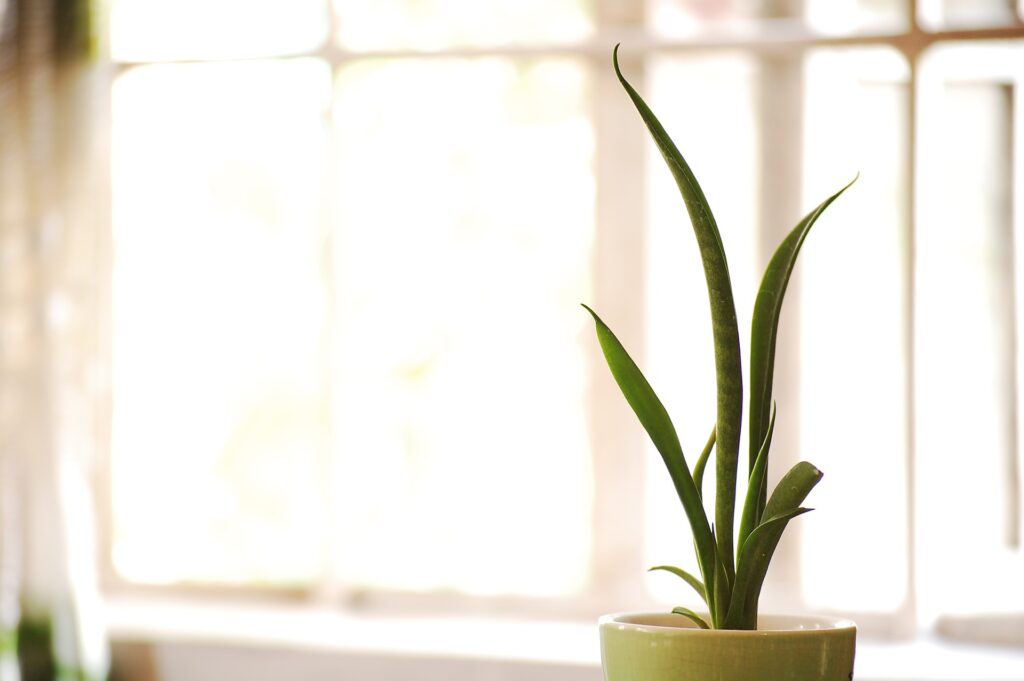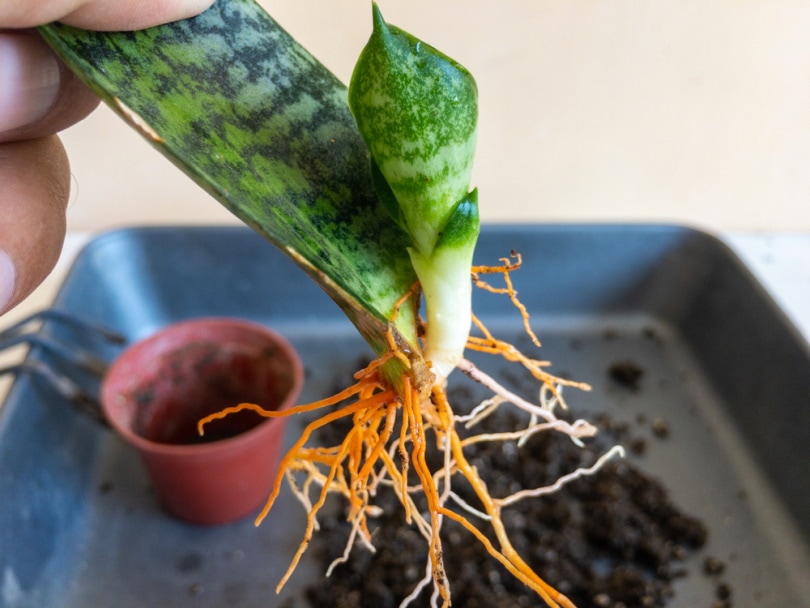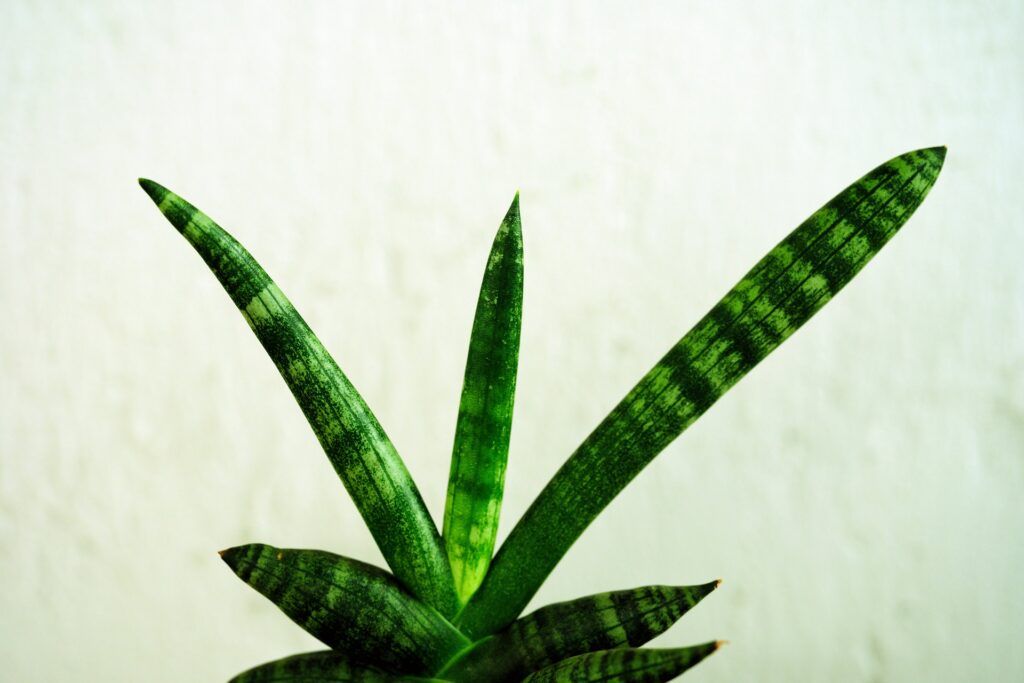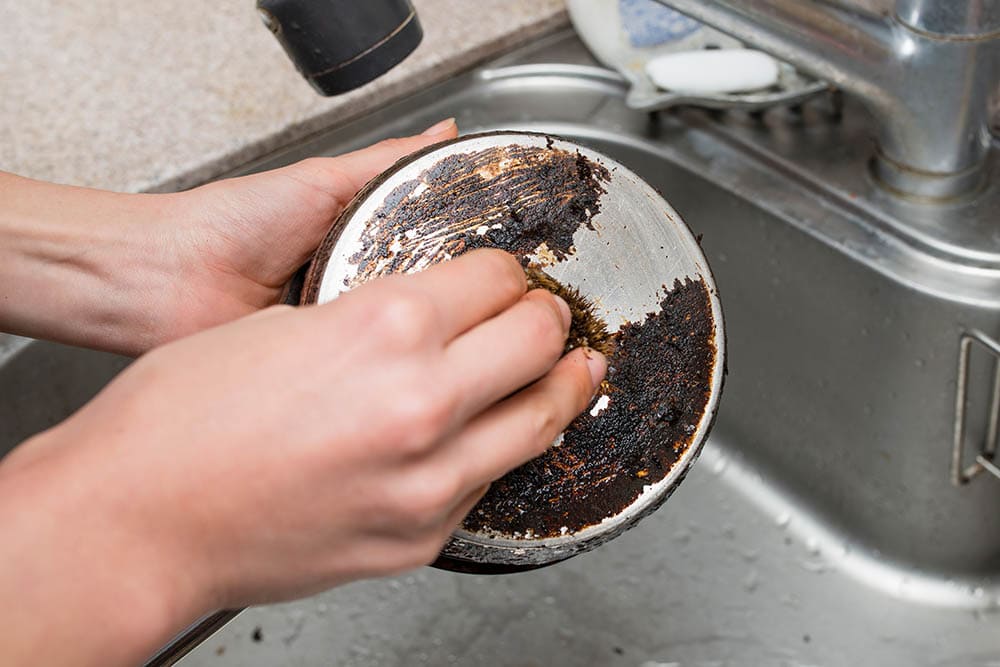How Much & How Often to Water Snake Plants: Signs & Factors
-
Pete Ortiz
- Last updated:

Everyone knows that the secret to having vibrant, healthy plants is watering. Water is an essential nutrient for any plant, including the snake plant. Unfortunately, the snake plant can be difficult to care for, and it can be difficult to know exactly how much water it needs.
Most people choose to water the plant whenever they think of it. This is a surefire way to kill your plant through overwatering or underwatering. Instead, it’s best to select a watering schedule specific to the snake plant. When the top 2 inches of soil are dry, you should water it.
Read on to learn exactly how much and how often you should water your snake plant for optimal growth.
Watering a Snake Plant

As a rule of thumb, you want to water your snake plant anytime the soil dries out. This normally occurs every week or every other week. In some cases, you might not need to water the plant for an entire month.
What’s most important is that you only water the snake plant whenever the soil feels dry. Stick your finger directly into the soil, close to the roots. Dig your finger all the way into the soil until your knuckles are reached. If your finger doesn’t get too dirty, the soil is too dry and needs to be watered.
Whenever you notice that the top 1–2 inches of the soil are dry, that’s when it’s time to water the plant. Water the plants so that the soil is completely moist again, though not completely bogged down. Because the top 2 inches should be dry when you begin watering the snake plant, add enough water so these top inches are moist again.
Signs It’s Time to Water Your Snake Plant
Checking your snake plant daily is the best way to ensure it gets the appropriate amount of water. You know that it’s time to water your snake plant whenever the top inch or 2 inches of the soil is dry. By checking the soil daily, you will know when this occurs and be able to water the plant.
Another way to know when it’s time to water your snake plant is to look at the plant itself. If your plant is looking wilted and droopy, it most likely needs more water. Some other signs to look out for include:
- Curling leaves
- Brown leaf tips
- Dry edges
- Yellow or brown leaves
- Brittles leaves and roots
- Slow or stunted growth
Before immediately watering the snake plant, double-check the soil to see if it is dry or moist.
Signs You’ve Overwatered Your Snake Plant

Underwatering your snake plant is not the only thing you should worry about. You should also worry about overwatering the plant. Overwatering occurs whenever too much water is in the soil, which causes the roots to rot and the plant to die.
Overwatering occurs whenever you water the plant too frequently and do not allow the soil to dry out in between waterings. The number one sign that you have overwatered your snake plant is soggy or mushy leaves. Snake plants are succulents, which means they store water in their leaves for the future. If there is too much water, the leaves will feel mushy, soggy, and moldy.
- Drooping leaves from weight
- Mold growth
- Loose, rotten roots
- White matches on soil
- Gross smell
- Flies
- Soft, yellow leaves
If you suspect that your snake plant is being overwatered, it’s important to act fast. You might be able to save the roots so that the plant will continue growing. Here is what you should do:
Remove all the wet soil from around the roots and rinse off the roots so any potential fungal pathogens are removed. Cut back the rotting parts until the healthy flesh is revealed. Treat the root ball with a fungicide to prevent further infection. Allow the roots to dry by placing them on a sheet of newspaper.
After the roots are completely dry, replant your snake plant in a new pot with new soil. Allow this plant to sit in the new pot for a few days before watering it again. Once it comes time to water, make sure to water more carefully so that overwatering does not happen again.
Factors to Consider When Watering Your Snake Plant
Many factors will impact how quickly the soil dries out and when the plant needs to be watered. Knowing these factors can better help you understand when and why it’s time to water your snake plant.
Season
The season is the biggest factor to keep in mind when watering your snake plant. Even though Snake Plants are often kept indoors since the season impacts the cycle of the plant. Snake plants are dormant during the winter and most active during spring and summer.
You will need to water the plant mostly during spring and summer as a result. By fall, cut back on watering. Watering may be completely unnecessary during the winter. Still, check the soil during all months to ensure the plant gets the water it needs.
Temperature
Snake plants grow best in temperatures between 50°F–85°F. If the temperature exceeds 85°F, you will need to water the plant more. Given that this plant will be inside, we hope that it does not drop below 55°F for your sake!
Humidity

Humidity is closely related to temperature and season. Because snake plants are succulents and desert plants, lower humidity is best. If you have high humidity in your home, you will need to water the plant less often. Keep in mind that your plant will also be more susceptible to mold.
Pot Location
Exactly where you place the potted snake plant can impact how frequently the plant needs to be watered. If the snake plant is located in an area where it sees a lot of sunlight, it will need more water than one that is placed in a shady environment. Overall, a sunny location is best.
Potting Mix

Different potting mixes hold different levels of moisture. Read about your potting mix’s moisture needs to better understand how often you will need to water the plant. The finger trick mentioned above will also help you to know when it’s time to water the plant.
Pot Type and Size
The actual pot you put the plant in impacts the watering process. Certain pots allow for better drainage, whereas others trap the water. Likewise, bigger pots take longer to dry out. Being aware of how your pot impacts the watering process can help you water your snake plant more effectively.
Plant Size

Bigger plants require more water. As your plant grows, you will need to water it more and more.
Plant Health
Whenever your plant is healthy, you will need to water it to its maximum amount. However, sick or unhealthy plants require less watering.
Final Thoughts
If you have a snake plant, it’s best to water the plant anytime the top 2 inches of the soil are dry. By sticking your finger in the soil, you can learn when the plant needs to be watered. If the top two inches are dry, add enough water so that these 2 inches are saturated again but not bogged down.
Keep the factors above in mind when watering your snake plant. Season, plant size, and many other factors will impact exactly how frequently you need to water your snake plant. Understanding the needs of your individual plant is the best way to water it and keep it healthy.
See also: Do Snake Plants Like to Be Root Bound?
Featured Image By: Organisatieservice, Pixabay
Contents


